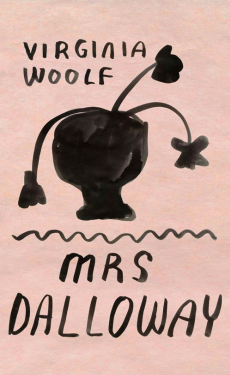
Email: reecejordan98@hotmail.co.uk
Total Article : 168
About Me:18-year-old sixth form student, studying English Literature, History and Government and Politics. My articles will broadly cover topics from the current affairs of politics to reviews of books and albums, as well as adding my own creative pieces, whether it be short fiction or general opinion.

The narrative voice of ‘Mrs Dalloway’ is one that focuses heavily on arbitrary changes in perspective, and, as a result of Woolf’s use of free indirect discourse, focuses primarily on the internal thoughts of characters rather than their external appearance. This use of narrative voice is one that spearheaded a revolutionary change in modernist writing: a transition from a fixation in the environment seen in the Romantic period to emphasis on the human condition and internal workings of the mind.
The differing perspectives of ‘Mrs Dalloway’ not only serve to show a panoramic image of a situation, it also overarches the theme of subjectivity within the novel; how each event stirs a different emotion within each character. This is seen perhaps most prominently when an advertising plane creates letters in the sky – each character viewing the letters differently (“’Glaxo’ said Mrs Coates” “’Toffee’ murmured Mr Bowley”), and the letters themselves having greater significance to Septimus not in what they actually spell out but rather their sheer beauty in the sky (“one shape after another of unimaginable beauty… with beauty, more beauty!”). This reveals one of Woolf’s main intentions for the novel: to illustrate that nothing within the world can be deemed objective, and thus, without an objective narrator, she shows us this world in its entire nuance, and how it is relative to each person.
Through the narrative voice, Woolf also conveys the idea that this subjectivity is limited in its scope of understanding the internal make-up of a person, that we are restrained in our senses in discerning the character of people. Woolf shows this in the contrast between characters appearance to their internal thoughts, most notably that of Clarissa Dalloway’s. Whilst society seems to take on the physiognomic view that Clarissa appears a “cold” or free (“a touch of the bird about her”) woman, her internal thoughts tell us otherwise. We as the reader are gifted the opportunity to see beyond these physical traits and see that she is not a “cold” woman (one that is emotionally limited), but is instead burning with emotion, evident in her reactions to the city (“was what she loved; life; London; this moment of June”). This, it may be argued, is Woolf illustrating the effects of war on the individual: one may have had to portray themselves in a different light to their internal situation to uphold morale and not to invite the vulnerability that comes with candour. Therefore, this shows the dual perspective of a person – their internal against their external.
The idea whether Clarissa is a free woman is debatable. Though she is seen largely as an independent woman – though this independence itself comes from the fact that she is married to an affluent man – we see that she is very much subject to the whims of her own mind, which acts a prohibiting force. For example, when musing over her daughter’s inclination towards her tutor, Clarissa speaks of her latent hatred: “to have stirring about in her this brutal monster! […] this hatred had power...and made all pleasure in beauty quiver and bend”. By personifying this hatred (“this brutal monster”), Woolf illustrates that Clarissa sees this hatred as something alien, something not part of herself. Thus, it can be argued that Clarissa is not free for she is subject to her mind’s own arbitrary whims that distort her reality. Conversely, Woolf may have tried to illustrate that women themselves are in fact free in their thought. By using free indirect discourse we see this vividness in thought. The feminist idea that Woolf espoused was one that challenged the conventions of the early 20th century, which was that women had not the same capacity for thought as men. Woolf herself was not allowed to go to university based on her gender. Thus, by showing such lucidity of thought within a woman’s mind, Woolf challenges this idea, and illustrates that women have just the same capacity as men for thought.
Image Credits: pinterest.com

0 Comment:
Be the first one to comment on this article.